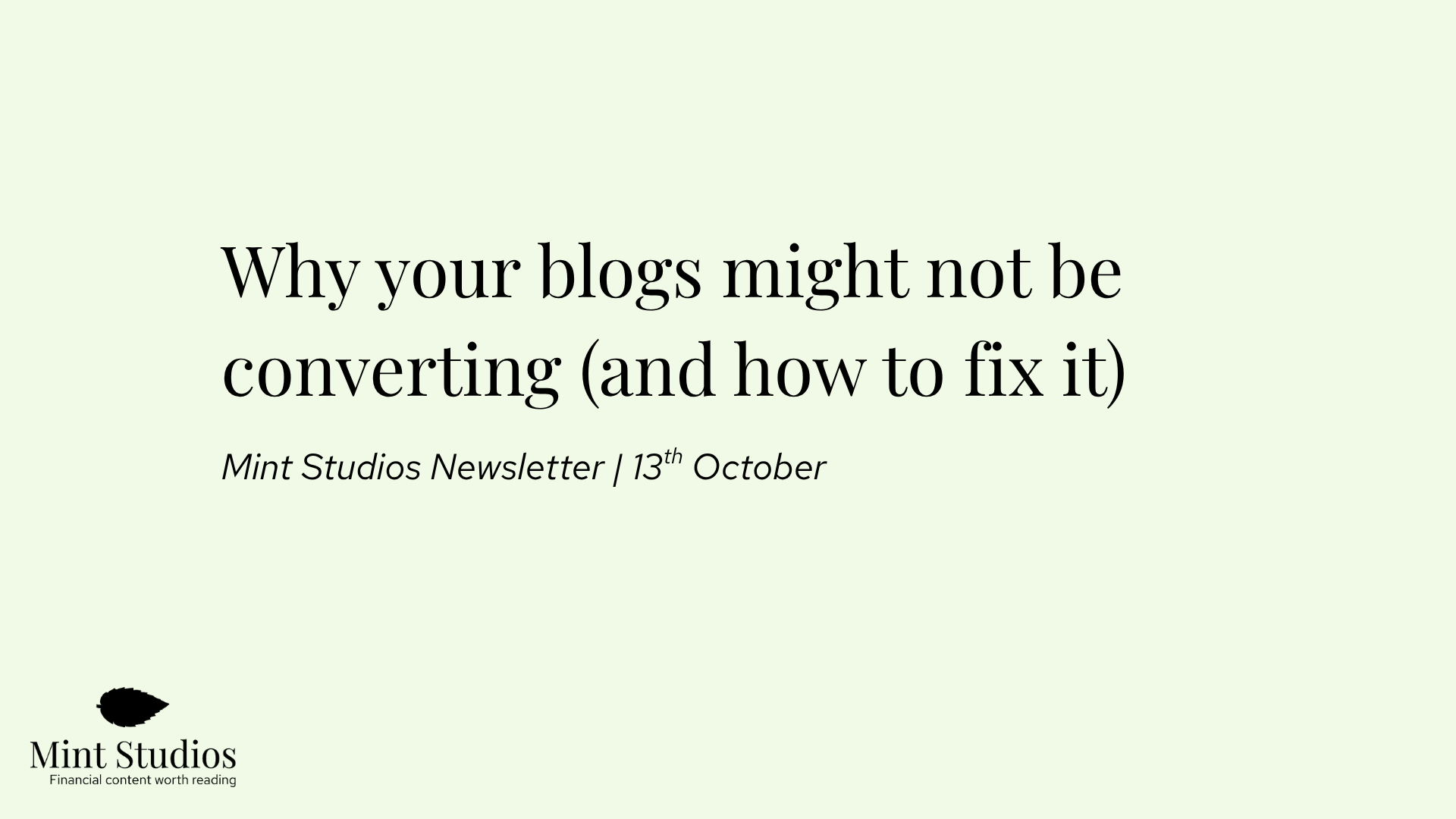Distribution is the underdog of content marketing.
It’s the unsexy difference between content that works, and content that often falls flat. The deeper you get into the content marketing world, the more you understand that really, distribution is key to getting content right.
On the surface, you think that content marketing is producing articles on a website and waiting to see everything rank. But actually, it’s a lot more complex than that. If you really want your content to succeed, you want distribution baked in.
What is content distribution?
Distribution is promotion. It’s marketing. Whenever you produce a piece of content, where are you going to promote it? Social media, newsletters, guest posting and repurposing are all types of distribution.
This quote by Andy Crestodina underlines the importance of distribution:
“It’s not the best content that wins. It’s the best promoted content that wins.”
If you understand marketing, then you’ll agree with this. You’ve probably heard a similar saying with product: “the best product doesn’t win, the best marketed product wins”.
Well, it’s the same with content. You can produce the best piece of content ever, but if you don’t tell anyone how will anyone find out? Sure, that piece of content will hopefully rank on Google in a few months and people will find out. But there are ways to market your content which will not only speed up that process, but allow you to reach even more people.
An effective content marketing strategy has distribution built in. What happens if not? Here’s a good story by fellow freelance content marketer, Dom Kent:
One day you wake up, and your organic traffic has suddenly dropped to 0. You start panicking. What happened? Your main acquisition channel just dried up. After doing some research you realise that Google has accidentally deindexed your site. Oh no! It might take a while to get your website re-indexed, and in the meantime? No traffic, no readers, no customers.
If you only rely on SEO, then this risks happening to you. But if you have an effective distribution strategy set up, then you know people will be reading your content no matter what. It’s like what they say with investments: diversify your channels so when one falls through, you’ve got others to back you up.
So, what are the best distribution strategies? Let’s dive into a few.
Top distribution strategies for fintech companies
The best way to approach this is to understand where your audience hangs out and what they respond to, pick several distribution channels, test them and commit to a select few. It’s also very useful to create a distribution checklist, and go through it every time you want to publish.
Scroll down to see examples of several checklists.
1. Email marketing
As Shameer Sachdev says in a recent Market Like a Fintech episode: “when you first set up your website, you want to be building an email list immediately. That’s worth its weight in gold in itself”.
As much as people might say they hate email, it’s still the primary form of communication for most businesses. Set up a newsletter sign up box, and start collecting emails. And as every digital marketer will say, the email addresses of your customers are the one channel where you don’t risk losing your audience - contrary to Twitter, Facebook, and other social media.
If you’re gathering emails, why not add extra value and send them something interesting every 2 weeks? It doesn’t have to be super long, super intricate. The most important is to make it interesting and engaging.
At Mint Studios, I send out a newsletter every month. I enjoy it personally because it forces me to search for fintech marketing studies and put my thoughts into writing. The newsletter has gotten me leads, friends and even freelance writers - as well as blog readers and podcast listeners. It doesn’t take too long to do and the upside is a lot higher.
Here are some tips from someone who has been writing newsletters for over 4 years and avidly reads several newsletters per day:
- Don’t make your newsletters look like an ad.
- Keep it consistent. If you send a newsletter once every blue moon people won’t know who you are and unsubscribe.
- Don’t fake personality. Some may disagree, but I don’t like it when a newsletter puts my name into the newsletter. Obviously it’s automated and you don’t know who I am - so why bother?
- Don’t make it salesy. Sure, it’s fine to promote here and there. But if you keep selling and don’t offer anything valuable, people will unsubscribe.
Newsletters will always be around. Just look at platforms like Substack: I much prefer receiving my news from industry leaders than publications or magazines.
How can you use this if you’re a company and not a person? I would suggest picking someone in your organisation to be an “industry leader” and be the face behind the newsletter? Andy from Orbit Media does this and I love their newsletters.
Speaking about newsletters, you can join the Mint Studios one below. 👇
Fintech marketing case studies, tips and Mint Studios articles in your inbox every month.
“Huge fan of your newsletter! Always valuable content.” - Pablo Andres, Director of Business Development at Orbispay
2. Social media
Social media marketing is the typical activity that looks easy, but is incredibly hard. When it comes to company social media marketing, it’s even harder. Most companies do social media wrong: they dump links, ask random questions and don’t focus on engagement.
It’s not the right way to do engagement. Social media consultant Alex Llull puts it eloquently:
“The main difference between brands that do social media well and those that don't is how they treat the channel.
Social media is social, by definition. For a brand to succeed, they need to behave just like any other user would. They need to be organic to the channel. This means talking like a normal person, posting memes if it makes sense, and having real conversations with their audience.
If the only thing they do is post about how awesome their product is and the amazing offers they have, they are not providing any value to the platform nor the users. It's just a sales page. And being "salesy" in social media is just setting yourself up for failure.”
With social media, you want to grow organically (that means keeping your followers in the app, rather than encouraging them to go to your website), and then adding links only when it really makes sense. Also, the best social media accounts seem to do a lot of prizes, giveaways and free money - so it ain’t cheap.
Some of the best fintechs that do social media are: Curve, Cashapp and Stash.
You can read more about them here: 9 Fintech Companies That Are Doing Social Media Right
Through my own experience doing social media, I believe that social media should be done by someone in-house, or if not a freelancer who really understands social media. That’s why we don’t do social media at Mint Studios (although we can create the posts), and instead encourage companies to work with a freelancer or hire in-house.
3. Influencer marketing/online networking
Influencer marketing essentially entails working with experts within your industry. It’s one of the most effective distribution methods because it’s all about building human connections.
These influencers can be Youtubers, bloggers, newsletter writers or even another company. Essentially, it’s anyone who produces content.
My favourite example of a company doing influencer marketing well is Pensionbee. In a recent Mint Studios newsletter I broke down how they partnered with personal finance blogger Lynn from Mrs MummyPenny, and why the partnership has been beneficial to both of them. Recently, Pensionbee featured Lynn in some of their outdoor marketing!
How do you build these connections? You start by giving: featuring, interviewing and promoting others. There are two main influencer marketing strategies I like to focus on:
1. Expert interview:
Feature an influencer/expert in a stand alone piece of content. It could be a video, a podcast or a blog article. You turn what they say into a piece of content that is valuable to your audience. At Mint Studios, I’ve done several of these pieces:
- Building a B2B Content Marketing Strategy: Interview with a Fellow Content Marketer
- How Fintech Can Help Solve Climate Change: Interview with Mitto Fintech
- Is Giving Free Money a Good Marketing Strategy? Interview with a Fintech Founder
And I do this every week on the Market Like a Fintech podcast.
In the fintech world, Wealthsimple has done a great job with this too. In fact, they went the extra mile and featured A-list celebrities from Hollywood:
2. Expert roundup:
With this type of influencer marketing, you gather contributor quotes from experts. Also called content journalism, you essentially build a relationship by quoting their expertise in a blog/video.
What’s great with this approach is you can repurpose those quotes throughout various pieces of content to make them more interesting and add perspectives.
See how at the beginning of this article I added a quote from Dom and my friend Alex Llull? I didn’t have to reach out to them to get those, since I already had them from other pieces of content. I just repurposed them into this article.
I’m a big fan of this strategy and have done it several times at Mint Studios too:
- Should I hire a Fractional Content Marketer or a Content Marketing Agency?
- Great Fintech Marketing Strategies For 2021 (Featuring Top Fintech Marketers)
4. Guest posts
Guest posts means producing a piece of content and publishing it on someone else’s site. It serves two purposes: building a relationship and also getting backlinks.
You could submit a blog article that includes a link, or exchange guest posts and links with the other person.
It’s quite a popular strategy and one content marketers have been doing for years. If you really want to get a piece of content to position number 1, then consider guest posting and linking back!
I’ve done this at Mint Studios too:
5. Communities
This tactic is a little harder and does require having someone who is dedicated to joining and participating in communities. Whether it’s setting up your own community or joining others, the goal is to hang out in places where your target audience is too. These communities could be LinkedIn groups, Facebook groups, Slack groups and any other communities where you can chat with others and exchange ideas.
It’s important to note that you want to be participating and taking part in the communities, rather than just dropping links. Many communities have a dedicated #promotion channel which is useful and a good thing to add to your distribution checklist.
At Mint Studios, I often promote my articles on content marketing Slack groups or Facebook groups - although I am very active in them too and make sure that the content I promote adds value and makes sense.
We eventually set up our own fintech marketing Slack community, with people from companies like Revolut, Truelayer, Pleo, Currencyfair and more. Join for free: Fintech Marketing Hub Slack group
Fintech companies such as Moov have done this very well: they manage their own Slack group and there is a big focus on community. Bryan, CMO of Moov, is quick to say that they never promote anything in the Slack community and it’s more of a cultural and brand thing.
6. Publishing on Medium
This is a strategy shared by Dom Kent, fellow freelance content marketer. I haven’t heard many companies or marketers doing this, so I think it’s an interesting tactic:
“My favourite [distribution strategy] is one frowned on by some SEOs. Every blog post we publish at Mio gets republished on Medium.
Sure, we're competing against ourselves. But in some cases, Medium's SEO power doesn't just outrank us but our competitors too.
8% of our inbound traffic is attributable to Medium.”
I’ve listed 6 popular distribution strategies, but there are many more. This article by the same Dom Kent outlines 40 different distribution tactics: 40 Actionable Content Promotion Strategies [With Examples]
Individually, each distribution tactic might not look like much. That’s why you want to make sure you commit to doing several of them.
You never really know when one will take off. I’ve had several articles fall flat on LinkedIn and take off on Twitter, and vice versa. It might seem boring and irrelevant to go through several distribution channels, but ultimately that’s what makes you stand out with your content.
Due to the number of distribution channels, it’s good to have a checklist with everything you need to do before and after you hit publish.
At Mint Studios, mine is quite simple:
- Publish post on LinkedIn & @ people included
- Publish post on Twitter & @ everyone included
- Share in 2 content marketing Slack groups
- Share in upcoming newsletter
Why distribution is important for fintech companies
Distribution is an underutilised strategy.
Most content marketing agencies or even content marketers will just offer the writing and ideation part of content marketing, and won’t do distribution.
Why? Because it’s hard, it requires effort and it often requires building connections (can a company really build connections with all the necessary influencers for 10 different clients? Maybe, but it’ll be harder and definitely more expensive).
As fintech becomes an increasingly crowded market, distribution is key to standing out and being different. If you work at a fintech company and are reading this, know that it’s still early and most fintech companies aren’t great at content distribution. That’s because most fintech companies:
- Don’t do social media management correctly
- Don’t have relationships with influencers
- Don’t do guest posting and other outreach
As a fintech you have an opportunity to stand out.
At Mint Studios, we understand the importance of distributing content. While other content marketing agencies might publish your blog post and wait, we take an active part in content distribution. We help build links to your content and we also do outreach to influencers/bloggers who might be great content partners.
Want to learn more about how we work? Read about the Mint Studios framework.











